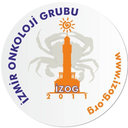Bevacizumab plus irinotecan in recurrent or progressive malign glioma: a multicenter study of the Anatolian Society of Medical Oncology (ASMO).
キーワード
概要
OBJECTIVE
The overall prognosis for recurrent malignant glioma (MG) is extremely poor, and treatment options are limited. We evaluated our multicenter retrospective experience for patients with recurrent MG administering bevacizumab and irinotecan in combination therapy.
METHODS
A total of 115 patients with grade IV glial tumor (n = 93) and grade III glial tumor (n = 22) were retrospectively evaluated at 14 centers in Turkey. Primary objectives of the study were to evaluate the efficacy and toxicity of the bevacizumab and irinotecan as salvage treatment based on response to therapy, progression-free survival (PFS), 6 months of PFS, overall survival (OS), and 6 months of OS (OS6).
RESULTS
Bevacizumab and irinotecan were performed as second line (79.1 %) and third line treatment (20.9 %). Median chemotherapy cycle was 6 (range 1-37), and median follow-up was 6 months (range 1-36 months). Objective response rate was 39.1 %. Six-month PFS and OS6 were 46.3 % and 67.5 %, respectively. Median PFS was 6 months (95 % CI 2.5-9.5) and 6 months (95 % CI 4.9-7.1) in the grade III and IV groups, respectively (p = 0.773). Median OS was 9 months (95 % CI 7.1-10.9) and 8 months (95 % CI 6.6-9.4) in the grade III and IV groups, respectively (p = 0.450). Serious toxicities were observed in 7.8 % of patients. Treatment-related toxic death was observed in 3 patients. There was no treatment related to central nervous system hemorrhage or other serious hemorrhages.
CONCLUSIONS
Present study results were consistent with previous studies. In addition, we detected similar outcomes in grade III and IV glial tumors.



